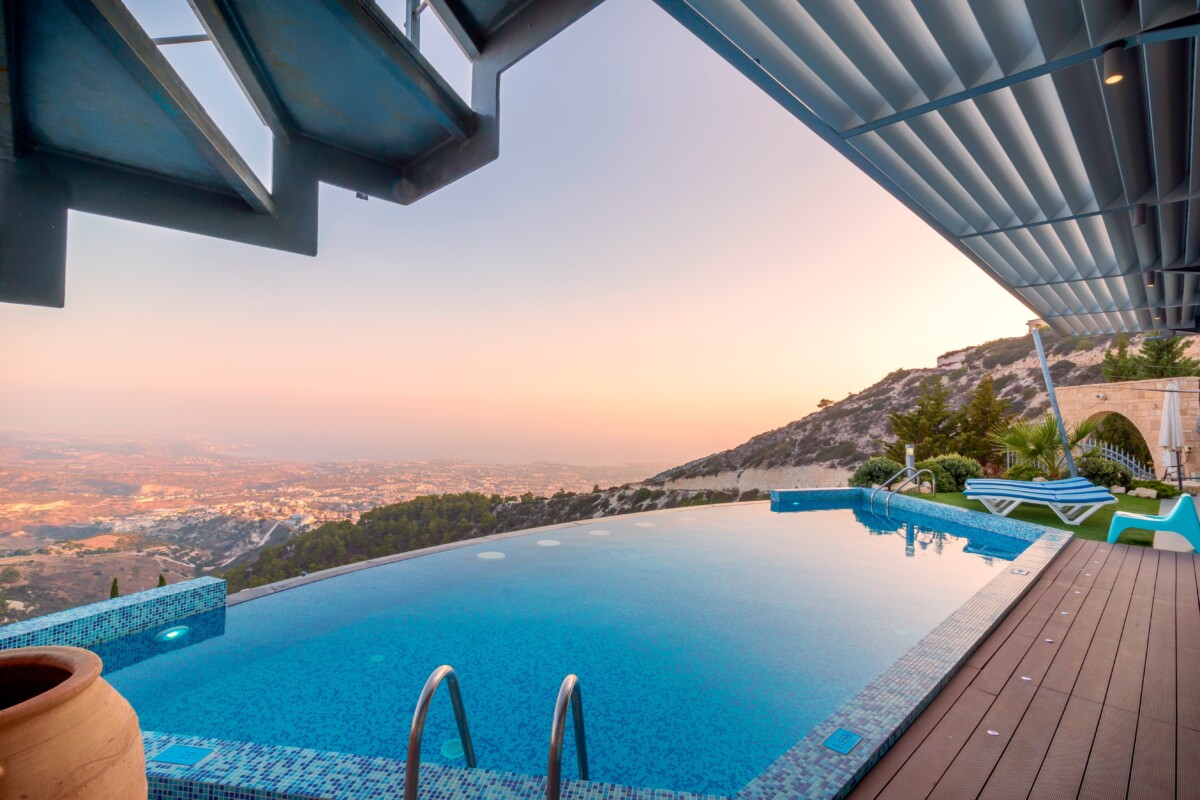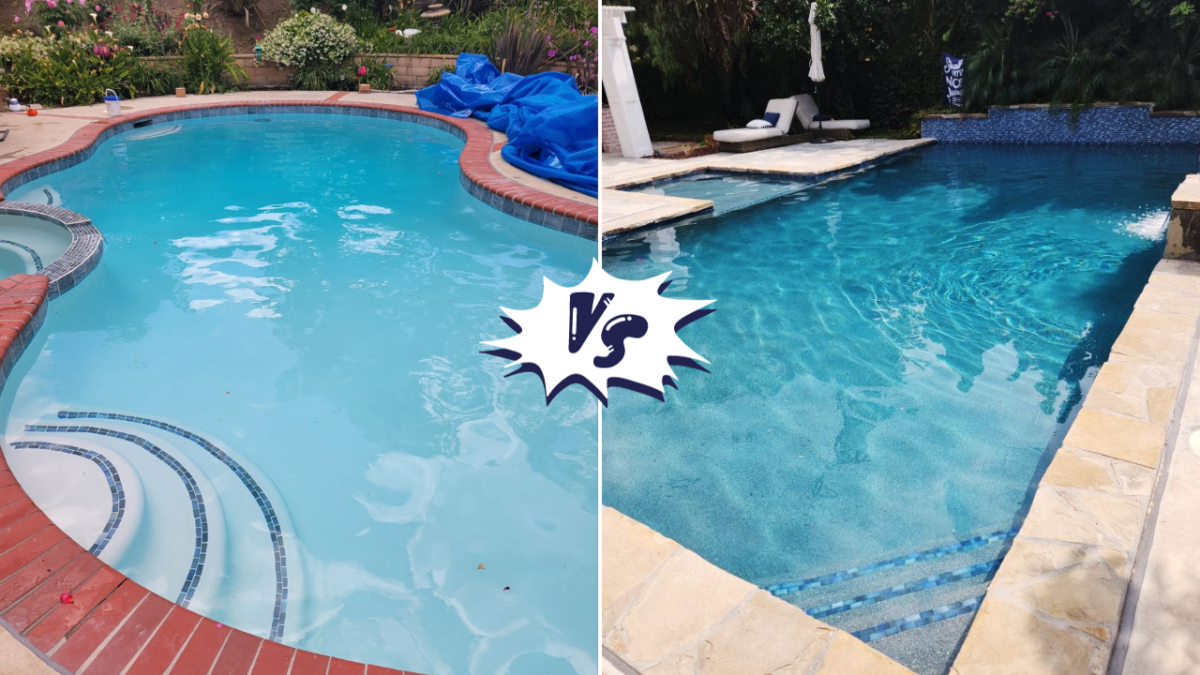White Pool Plaster vs. Mini Pebble Plaster: What’s the Difference?
What to Consider?
Budget:
Overall what you are willing to spend on the pool?
Aesthetic:
What aesthetic best suits your taste?
Longevity:
Does the longevity of the plaster mean a lot to you?

Start Here!
The first thing to consider is your budget. Having a number in mind is a great thing, but keep into account that a remodel or replaster of your pool can have its fair share of surprises. Start by gathering a few quotes, this will allow you to really know your budget range for your project. If you are interested in financing, we do offer financing through Viking Capital. Once this budget range is established, make a second budget for unforeseen issues because construction projects have their fair share of surprises. For instance, after demolition of the plaster , we can possibly find a crack or rebar needing repair that wasn’t in the original scope. Having a buffer is super important to ensure you can finish your project.
Now, lets talk about understanding the difference between white and pebble plaster!
White Plaster
White plaster consists of 3 ingredients: Cement, Sand and Calcium. This mixture creates the bright white surface you have seen in many different pools. It goes back to the earliest days of pool plastering! Once mixed in the plaster truck and sent to the pool the guys will smooth out the surface until it looks like a ceramic dinner plate. The aggregate in white plaster is sand which holds the mixture together and gives it its durability. White plaster is a lower priced option for a replaster. However, it also has a shorter lifespan & inferior durability over a pebble surface.
Why haven’t you mentioned adding color to the plaster? Good question!
If you want a colored surface, we highly recommend pebble instead of a traditional plaster mixture. The color fades at a faster rate, and it can splotch in areas & will not last as long. Due to issue’s we’ve seen so many times in the past, we only recommend white colored plaster.
Let’s switch to talking about the pebble type of pool plaster.
Pebble Plaster
As you read in the white plaster portion above, there are typically 3 ingredients when mixing for a replaster, with pebble we add a 4th ingredient. These ingredients are: cement, calcium, color & the pebble aggregate of your choice. Instead of using sand, the pebbles give the surface a completely different look, increased durability, & greater longevity.
Pebble plaster can come in many different colors and styles. The color of the pebble surface is more resistant to blotching than traditional plaster application & looks better too! Matching some nice tiles can make it look like you built an entirely different pool! After 10 to 15 years, most white plaster pools will start to look a bit worn but a well maintained pebble finish can still look new. Acid washing is always a claim to fame for keeping plaster looking better after several years, but acid washing only goes so far to strip off a thin layer off the top to help show the true colors. This method can only be used a couple times & cannot be used if the plaster is in poor condition. Pebble plaster stands up better to acid washing, which in turn can possibly keep the pool looking better for a longer period of time over traditional white plaster, which if treated the same at the same age as a pebble pool would have a much different outcome. ( Interested in Acid Washing? Check this page out here) If a long term investment means the most to you, pebble is great to consider.
There are also many different brands of pebble like mini pebble, pebble tec, etc. Your contractor, or us here at ACE, can help guide you on what they typically use or what is best for your situation. We bring samples of plaster and tiles to each estimate so we can show you what is available for your remodel project. We personally like using Stonescapes Mini Pebble, our clients have been happy with the results!
To Summarize
White Plaster:
Pure white, clean, & cheaper than pebble. Choose this type if cost is most important or if you prefer this style over pebble & if longevity is not most important to you right now.
Pebble Plaster:
Color variations & many types or styles to choose from. Choose this if you prefer the look of pebble, if longevity is more important than the cheapest option & if you want color options that will last.
Was this blog helpful? Let us know if you’d like our assistance on getting YOUR pool plaster done!



